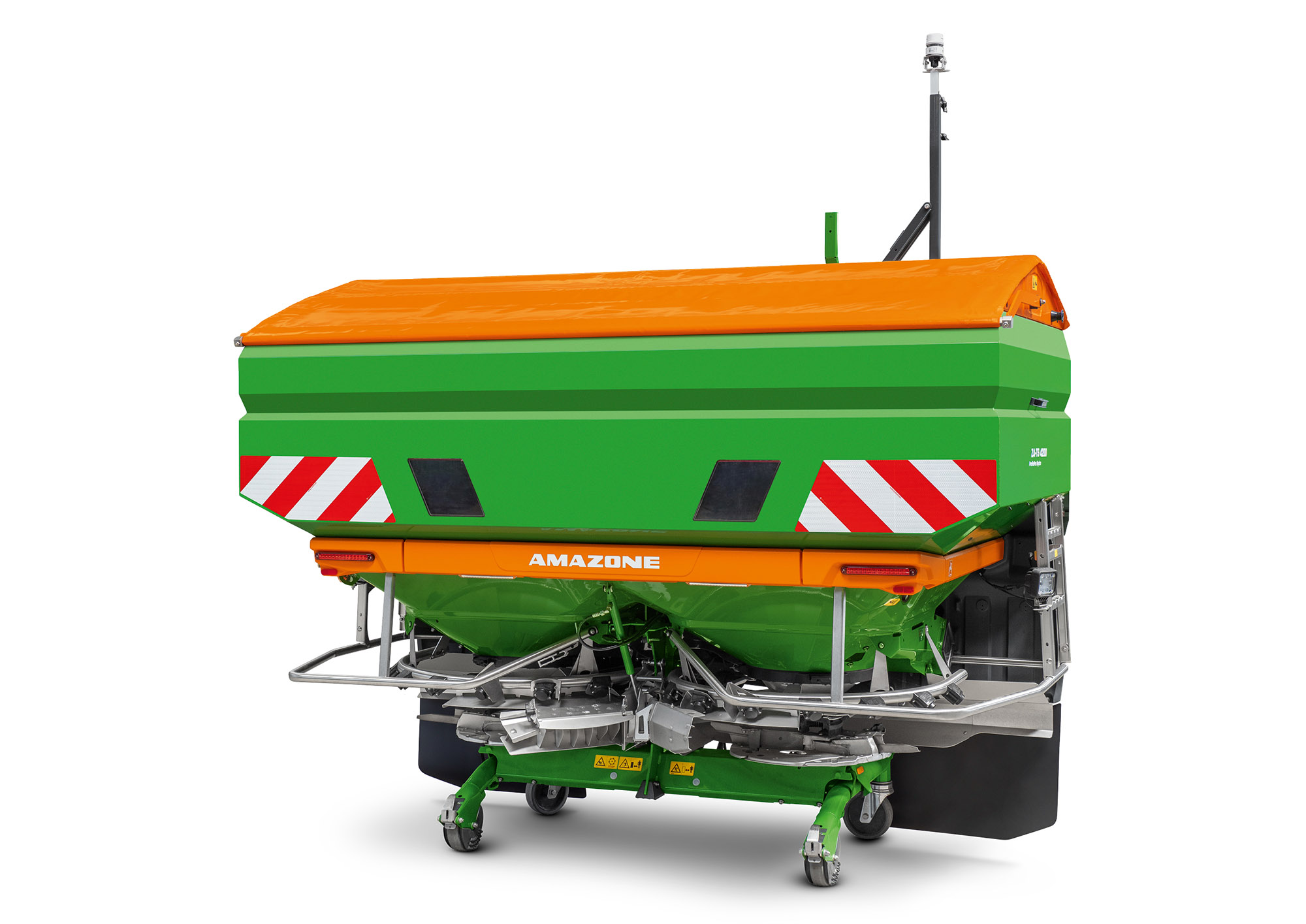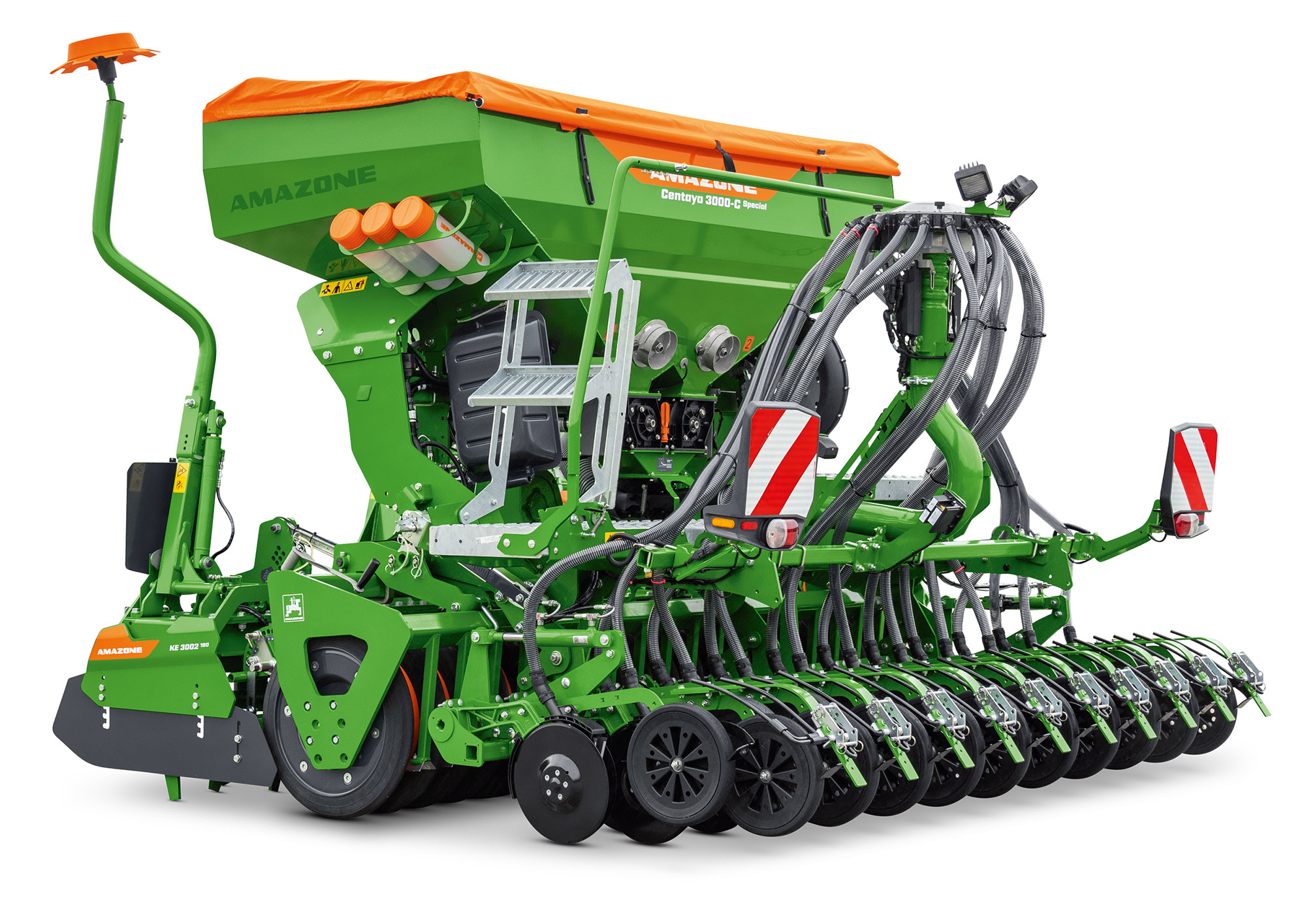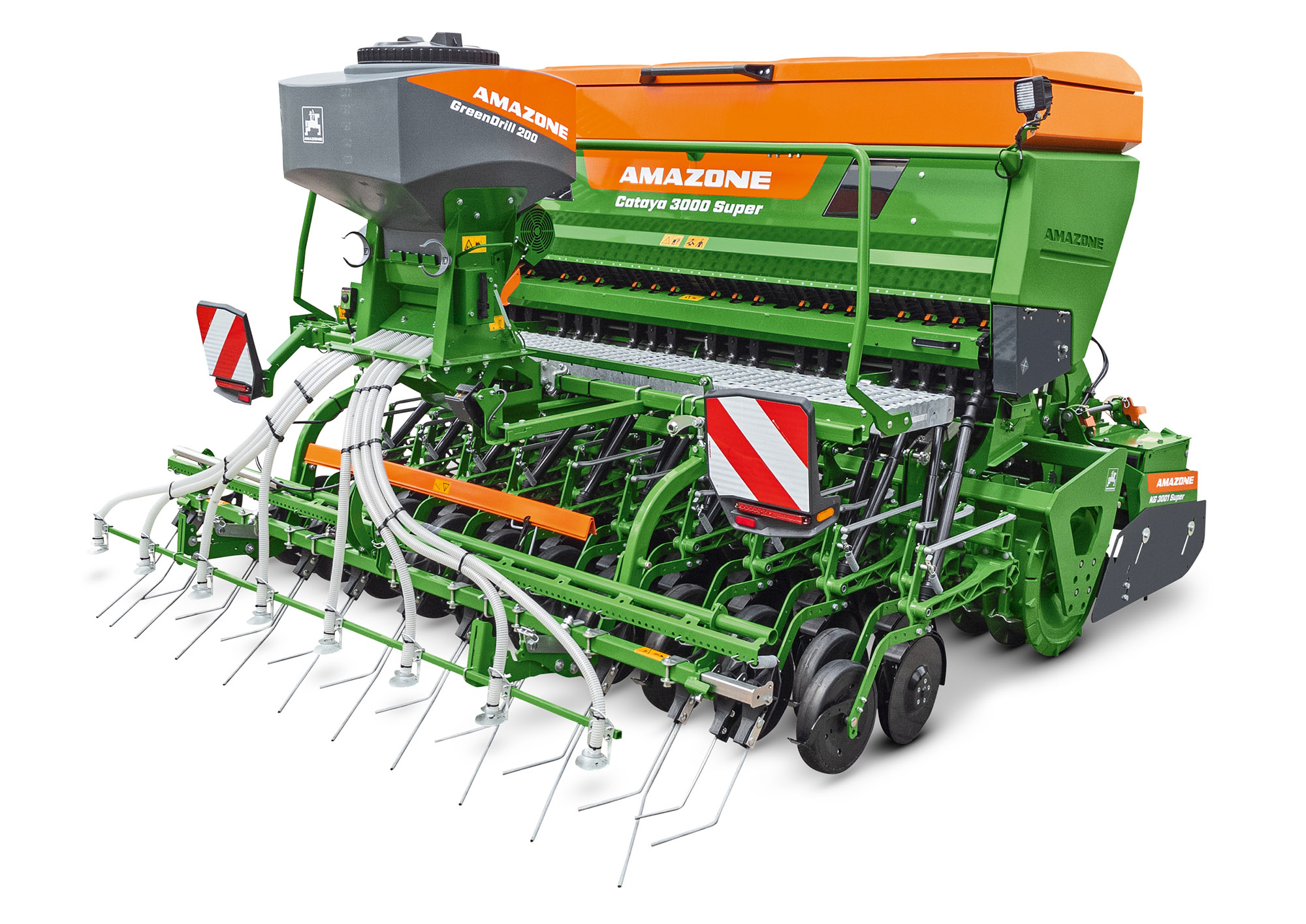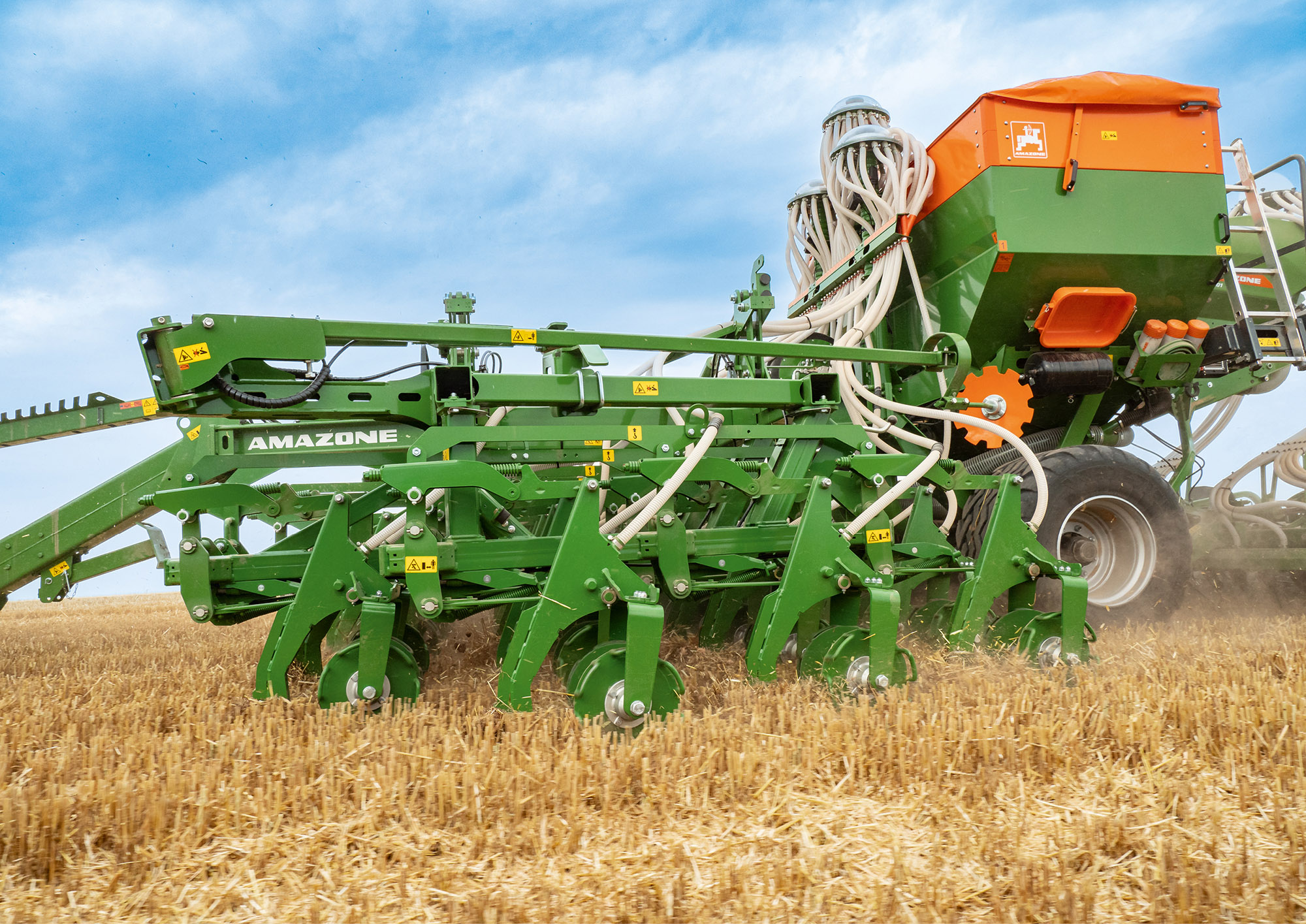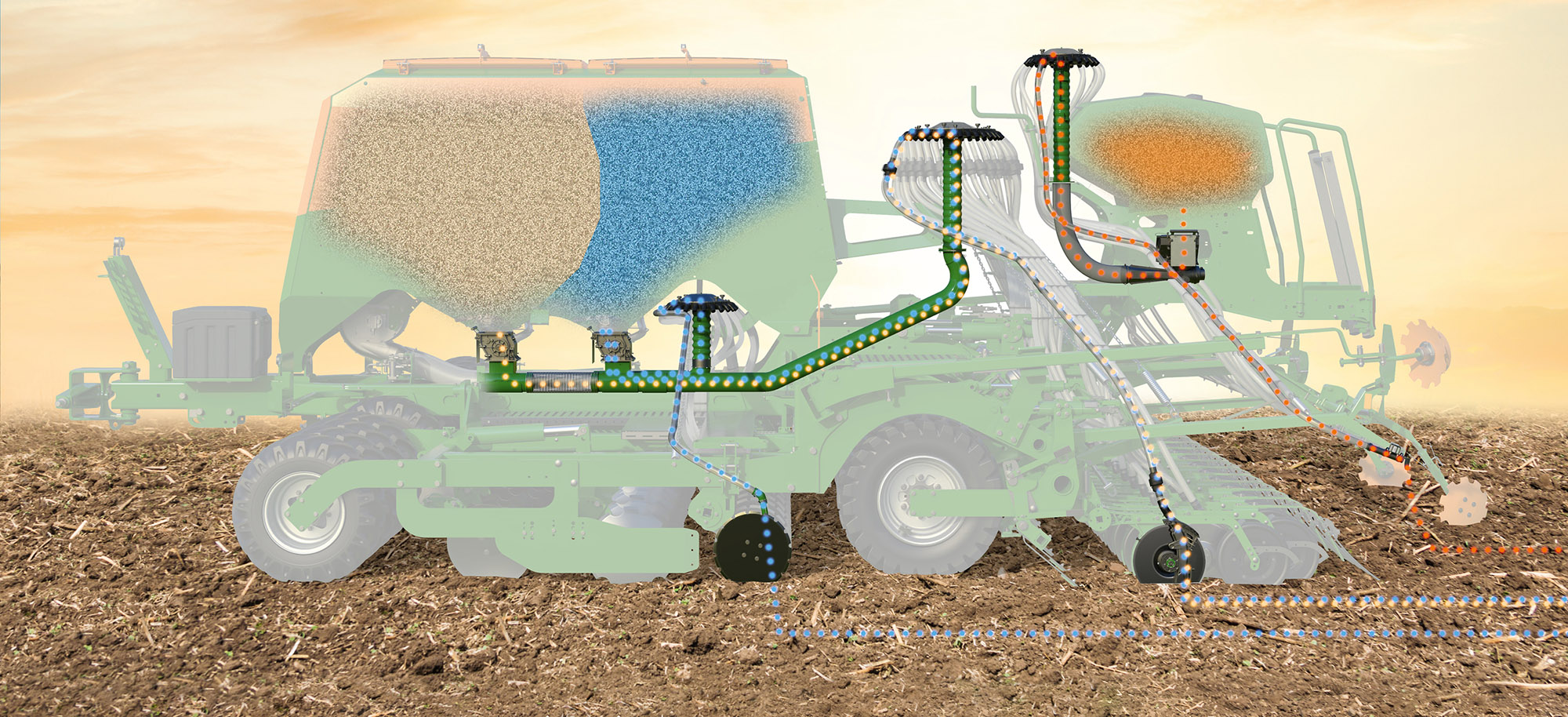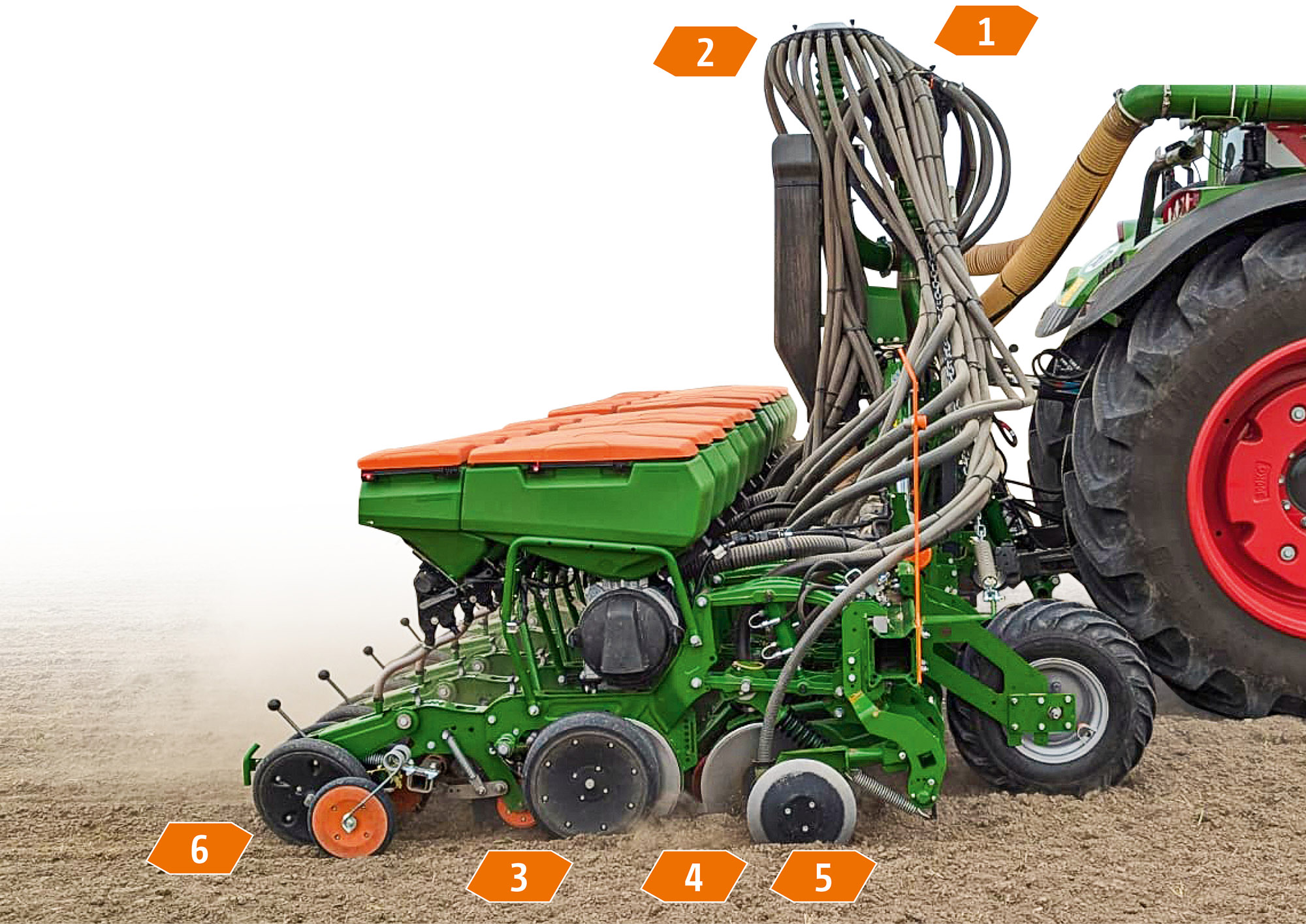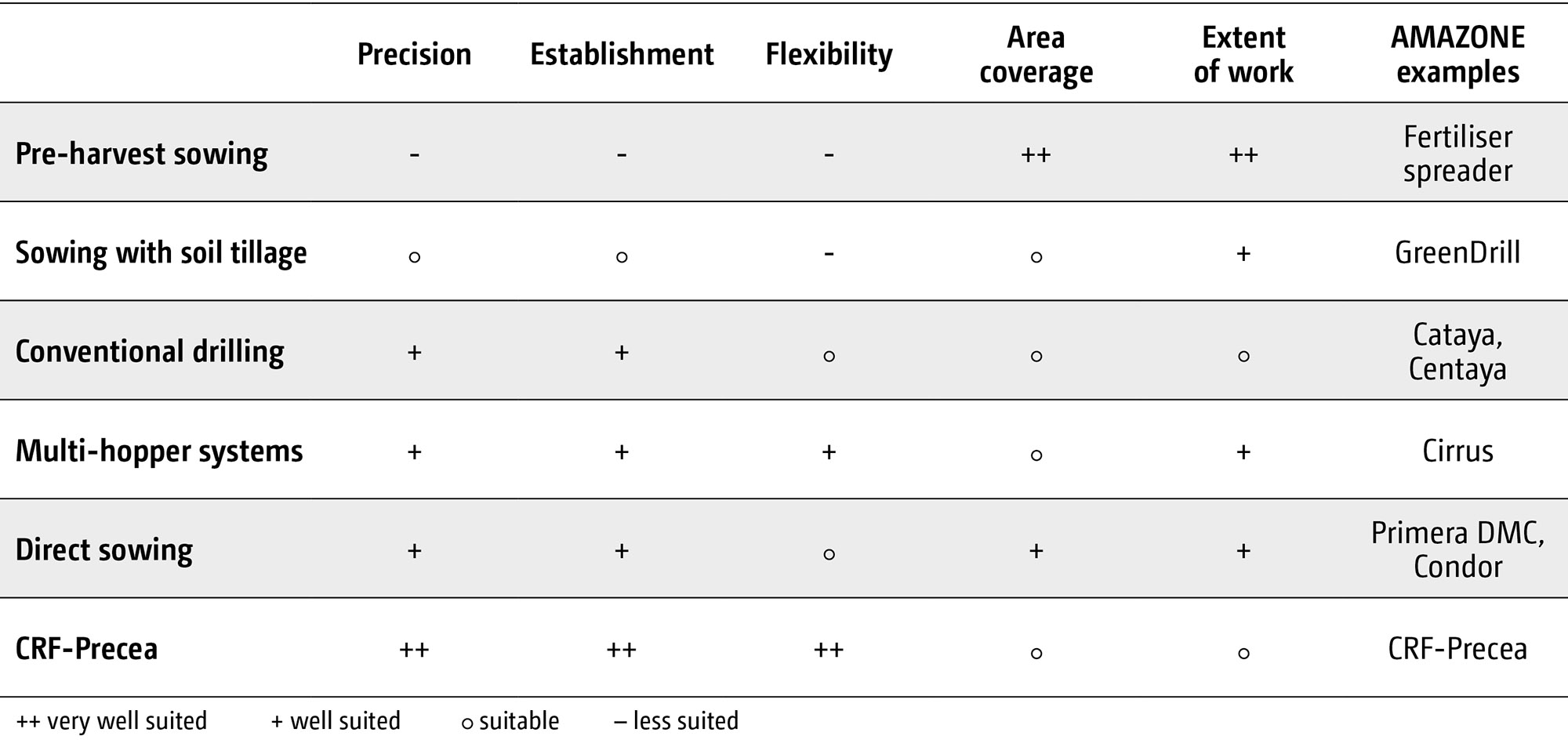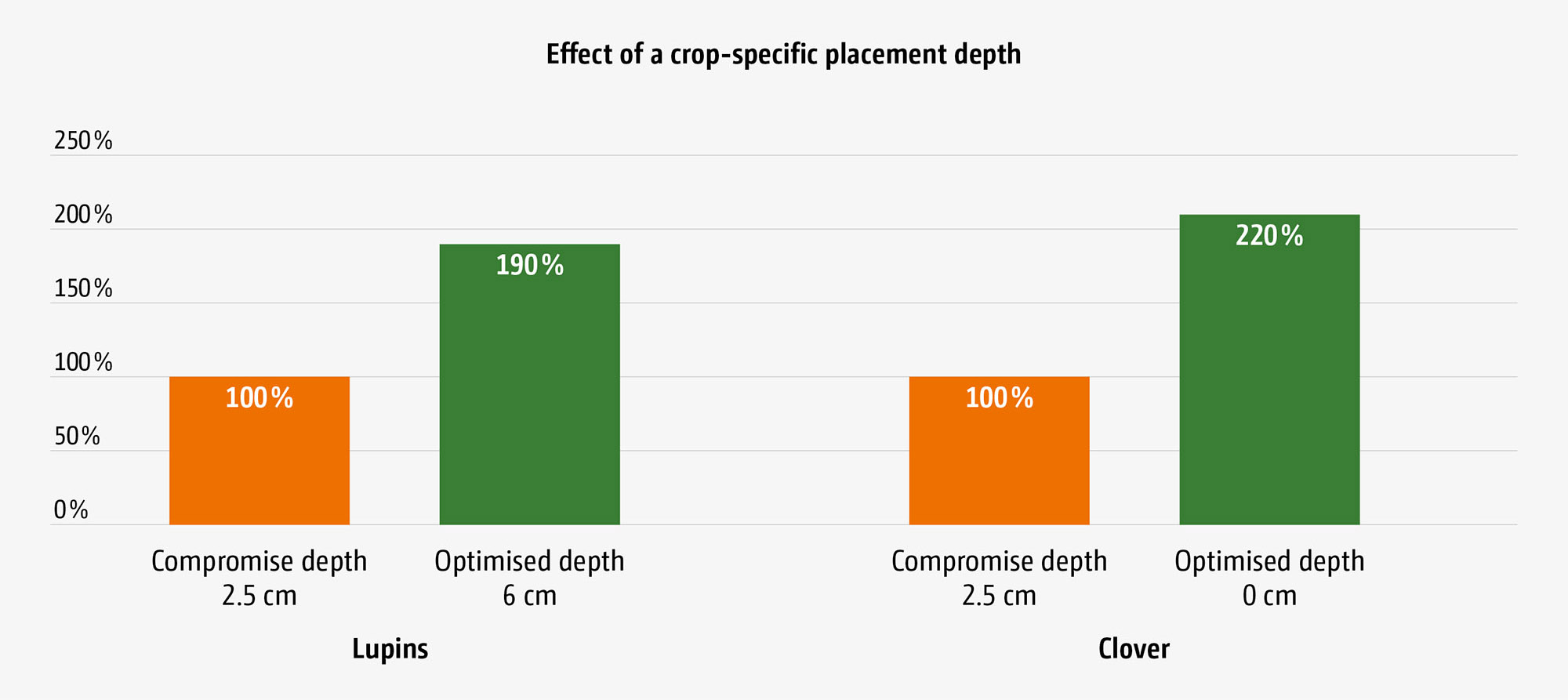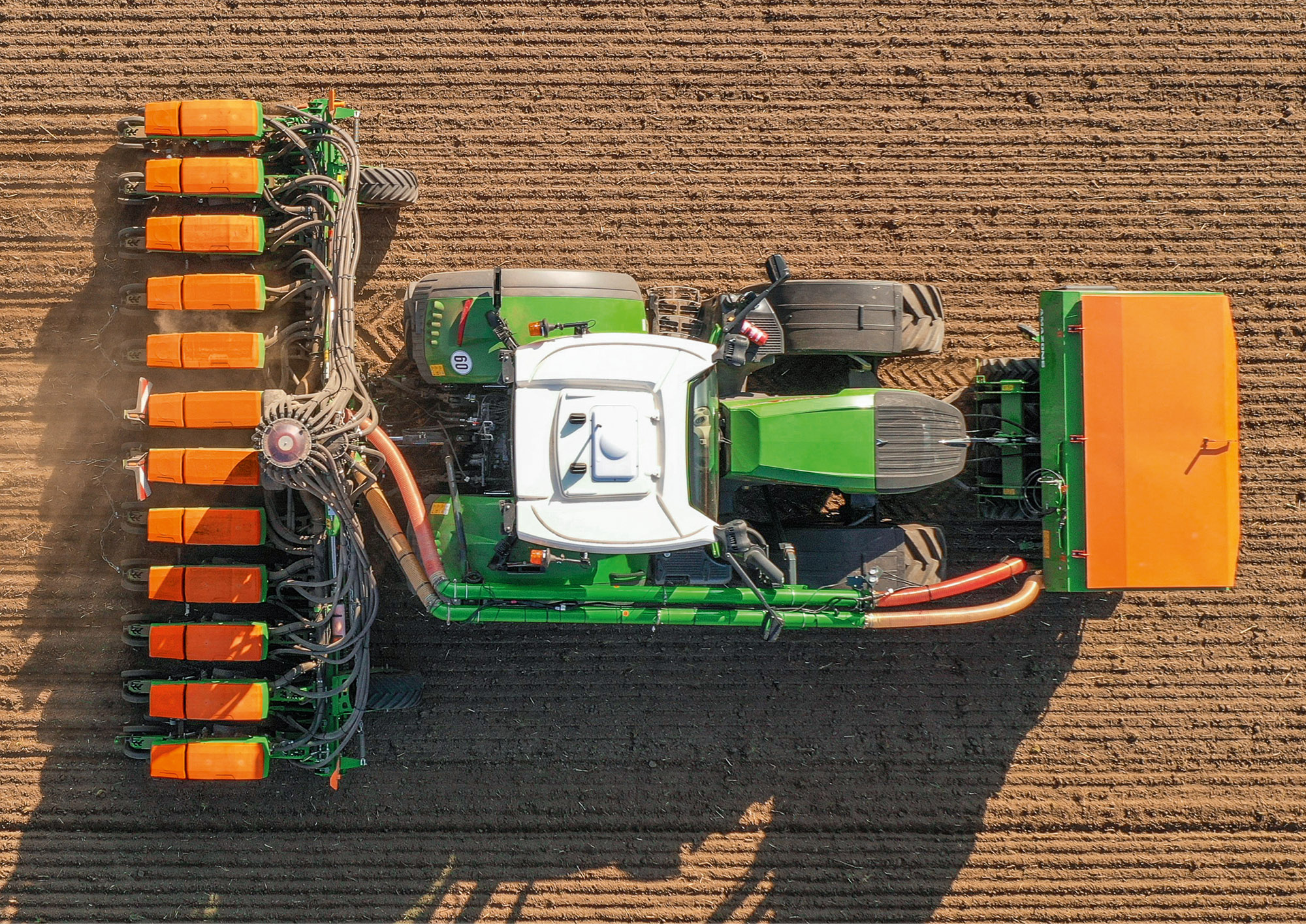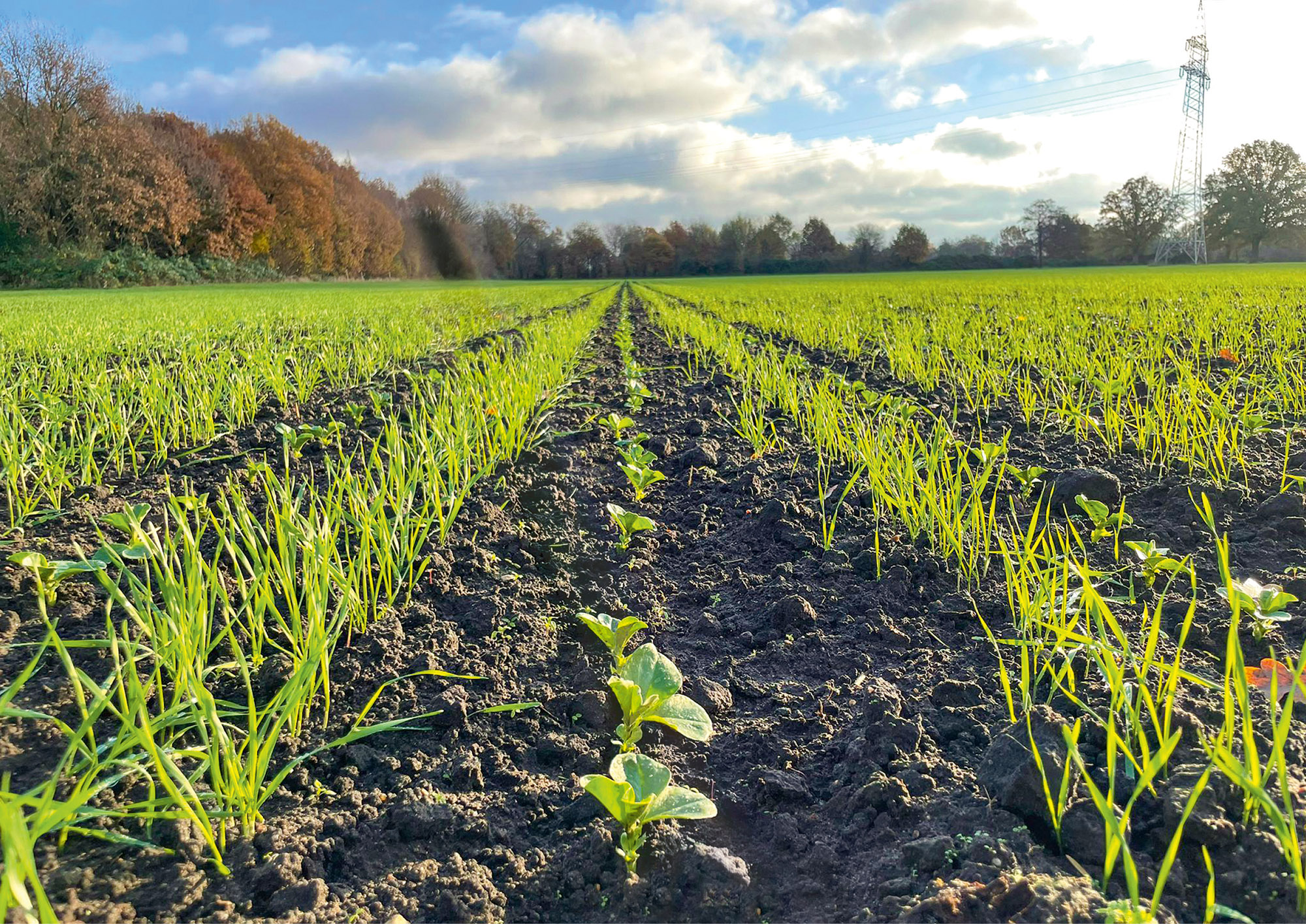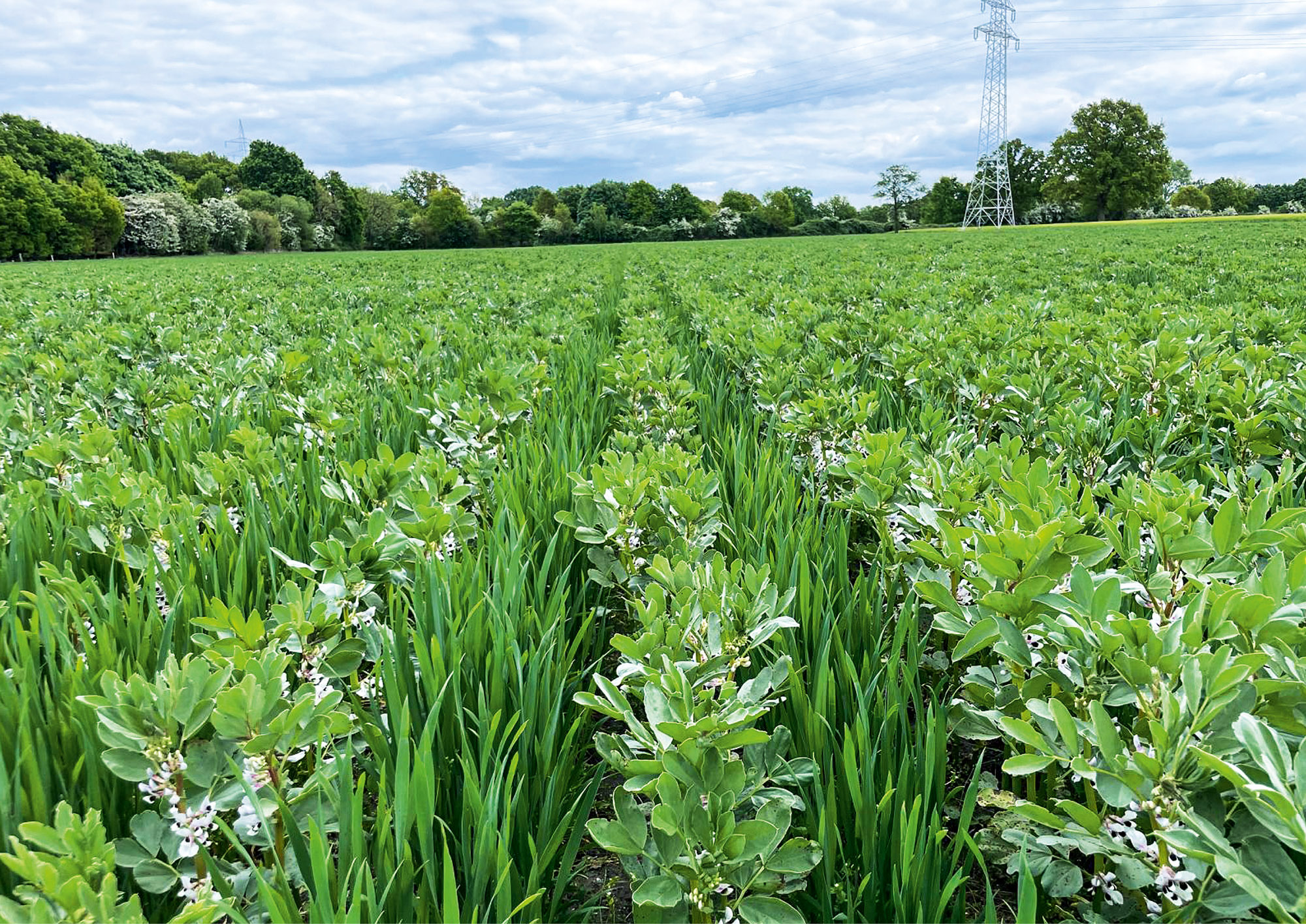Effectiveness and precision in catch crop sowing
The technical solutions at a glance
Catch crop sowing has played an increasingly important role in arable farming since the early 2000s. Supported by the greening measures of the CAP reform, the topic has been put into practice and researched in many areas. We are now under an obligation in Germany, particularly when it comes to winter greening. The aim is to combine both ecological and economic benefits – through improved soil structure, erosion control and efficient nutrient utilisation. Various technical solutions are available, which differ in terms of precision, effort and cost. A wide range of seeds is also available: simple, inexpensive mixtures of, for instance, mustard and oil radish fulfil the mandatory greening requirement. Complex mixtures with up to 10 different plant species are more favourable but also considerably more expensive.
AMAZONE has the right implement in its product range for every location and farm. Our own field trials provide valuable insights – because each plant species only develops its full potential with the best germination conditions.
Objectives of catch crop sowing
Catch crops fulfil a variety of functions in crop production:
- Promotion of soil health and soil life
- Reduction in soil erosion and structural damage
- Reduction in nutrient leeching
- Promotion of biodiversity and the landscape profile
- Fixing and/or breaking down nutrients
- Weed suppression and control of volunteer cereals
Requirements for catch crop sowing
In order for catch crops to fulfil their usefulness in an appropriate manner, there are requirements during sowing:
- Uniform, fast field emergence
- Reliable soil/seed contact for ideal germination conditions
- Machinery suitable for soil type and seed mixture
It is particularly important to adapt to site-specific conditions such as soil moisture, residues from the previous crop or existing machinery availability.
Methods of catch crop sowing
The technical implementation of catch crop sowing is crucial to its success. Regardless of the chosen sowing system, various methods are available which differ in precision, efficiency and adaptability. Choosing the right system is a central component of successful catch crop establishment.
Pre-harvest sowing with the ZA-TS mounted spreader
One simple option is to broadcast the crop on, in which the seed is distributed on the surface with a fertiliser spreader or drone. This method is inexpensive and quick, but requires moist weather conditions for successful germination. It is particularly practical for use in standing crops or when under time pressure. The method is limited to light germinators.
Sowing with soil tillage: GreenDrill on the Catros or Cenius
Combination sowing, in which the seed is applied during stubble cultivation or soil tillage e.g. with a mulch cultivator or compact disc harrow, is more efficient. Simultaneous incorporation can achieve better soil/seed contact, which improves germination conditions. This type of combination can be easily integrated into existing workflows.
Sowing with the Cataya conventional or the Centaya pneumatic harrow-mounted seed drills
Sowing with a seed drill offers a further increase in precision and uniformity. A seed drill combination which places the seed at a uniform depth is used for this purpose. This method is usually combined with prior stubble cultivation. The result is homogeneous field emergence. This method is widely used in practice, especially for high-quality seed mixtures or sensitive crops.
Sowing with multi-hopper systems: Cirrus trailed cultivator drill
Modern seed drills with multi-chamber systems enable the separate metering of different seeds. De-mixing is avoided, especially with very different grain sizes. If the various hoppers are combined with various delivery points, the field emergence of different seed components can be increased. This allows the specific needs of individual plant species to be addressed and their placement in the soil to be controlled. The Cirrus, which offers the triple-shoot option, is an example of this.
Direct seeding: Condor trailed seed drill, Primera DMC large area seed drill
Soil tillage is completely dispensed with in direct seeding. The seed is deposited directly in the stubble or the remaining straw of the previous crop. This method places the highest demands on the seed drill but offers advantages in terms of soil regeneration, erosion control and water balance. By eliminating the need for soil tillage, direct seeding saves time, which is reflected in quicker and more competitive crops. Direct seeding may be the most appropriate method, especially in dry conditions or erosion-prone fields.
Direct seeding increases the risk of the volunteer growth of underground rhizomes and cereals. This so-called "green bridge" can transmit diseases within the crop rotation and must be taken into account in crop rotation planning. Direct seeding into the stubble is efficient and reliable with the Condor trailed seed drill or the Primera DMC large area seed drill. The tine coulter and chisel opener technology on the drills is used to clear straw residues and allow the seed to establish without interference. A wide range of hopper systems are also available for tine coulter seed drills.
Combined high-capacity sowing and precision seeding with 4 delivery points
The structured and optimised sowing using a special Precea precision air seeder equipped for Controlled Row Farming, which has been running as a prototype in the field since 2024, goes even further. The precision air seeder with a row width of 50 cm is equipped with 3 additional sowing systems to enable a wide range of combination options. The row spacing of this implement follows the concept of CRF (Controlled Row Farming): with a row spacing of 50 cm and every crop has optimum growing space.
Each component of a seed mixture can be perfectly placed and therefore has ideal germination conditions. Using the example of a catch crop mixture, the following options are available:
- Coarse-grained legumes placed at 6 – 10 cm using high-volume sowing via the fertiliser coulter
- spaced, singled crops with very precise placement at 1 – 8 cm
- Various seeds with normal depth requirements using high-volume seed drills with RoTeC coulters at a depth of 1 – 6 cm
- Light germinators, e.g. white clover, scattered on the surface with a micro-granular applicator
Intensive field trials were carried out to illustrate the importance of a precise and crop-specific placement depth. The following diagram shows the extent to which precise placement can increase field emergence. The results show the enormous potential of this type of technology: expensive seed achieves significantly higher field emergence if it is ideally placed.
Optimised intercropping with the CRF-Precea
Combined high-capacity sowing and precision seeding open up some interesting options for arable farming. Topics such as organic strip-till and intercropping in particular should be mentioned here: the intercropping of legumes with cereals is widespread in organic farming. The legumes enrich the soil with nitrogen from their nodule bacteria, while the cereals give the crop stability and structure. Depending on the weather conditions, one or the other crop has an advantage. The harvested mixture is ideal as protein-rich feed, and subsequent separation is also possible.
The CRF-Precea enables the separate metering of both main crops, their crop-specific placement and, above all, the singling of the legumes. The result is a clear row structure which enables systematic, crop-specific care. A harrow can be used more effectively and efficiently in vigorous and evenly developed crops.
Light, water and nutrient resources are optimally utilised, and weeds are successfully suppressed with rapid, maximum field emergence. Competition between the crops is minimised and synergies are strengthened.
Comparison of the methods
The evaluation summarises the strengths and weaknesses of the presented methods. The site-specific and farm-specific conditions must be taken into account. In principle, the greatest possible flexibility with diverse crop rotations and changing weather conditions is advantageous.
Conclusion and recommendations
Catch crop sowing is an important component of sustainable agriculture. The selection of the appropriate technical process depends on the:
- Objective of the catch crops, e.g. N-binding, soil protection
- Field conditions and soil moisture
- Time of sowing and available machinery
- Seed type and mixture
As an innovative agricultural machinery manufacturer, we are passionate about technical progress because we are convinced that modern agriculture can only be successful in the long term with customised solutions. The machinery should be appropriate for the farm operation and cultivation objectives, in order to achieve maximum efficiency and resource conservation. Innovative systems such as structured sowing are gaining in importance through complex catch crop mixtures and plant communities, as diverse plant communities offer ecological and agronomic opportunities for modern, resilient crop production. Our machinery enables us to help farmers exploit this potential – for productive and sustainable agriculture.
- Maximum field emergence – thanks to precise crop-specific placement depth
- Get more out of every seed type
- Flexible technology for changing conditions – one Implement, many possibilities - Catch crop today – cash crop tomorrow
- Today a catch crop – tomorrow the main crop
- Sustainability through diversity – machinery for more biodiversity in arable farming
- Sowing diversity, harvesting the future – sustainable arable farming starts with the right machinery
Gallery
